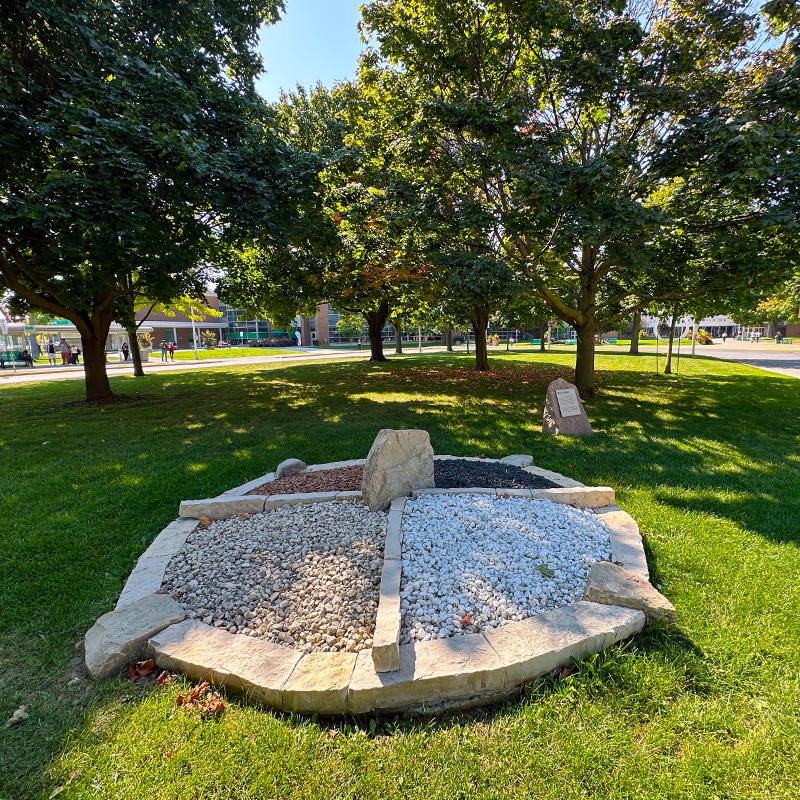Indigenous artist shares meaningful art with Durham College
Artistic expression has always been a passion for Emma Whiteye, and her creativity is leaving a mark outside of the classroom.
The Fine Arts – Advanced student and proud member of Walpole Island First Nation arrived at Durham College (DC) last fall. Having worked in a variety of artistic disciplines since childhood, she has spent her first year in the program honing and developing her already impressive skills.
“I like all the arts,” she said. “It’s fun to try something new for each little thing.”
When an assignment tasked her with producing a scroll-style painting, she decided to create a painted representation of the 13 Moons, a teaching from Anishinaabe tradition. Each of the moons represents a new teaching, a change in nature and a cultural tradition.
After working hard for two weeks, she completed a beautiful piece that caught the eye of Dr. Kayla Murphy, Director of Indigenous Initiatives at DC.
It impressed DC leadership as well and now reproductions of the artwork are displayed at both the Oshawa and Whitby campuses.
“I was shocked. I couldn’t believe it,” she said of learning her piece would be hung on the walls for all to see. “I’m really excited that it’s there.”
With the art now unveiled, Dr. Murphy, also a member of Walpole Island First Nation, is pleased to see a profound interpretation of Indigenous teachings featured so prominently on campus.
“It’s important to see that reflection of self and voice, and to have that representation within the institutions where students can see themselves within academia,” said Dr. Murphy.
While everyone at DC can appreciate the art for its colour and craft, Whiteye is confident that her fellow Indigenous students will find particular meaning in it.
“Even if they know nothing about the 13 Moons, they’ll see it and be like, ‘that’s part of my culture,’” said Whiteye. “It’s just something new that they can learn.”
The artwork is on display in Oshawa’s Gordon Willey Building, South Wing across from the Learning Commons, and in the main entrance of Whitby’s Don Lovisa Building. You can learn more about the 13 Moons online.



